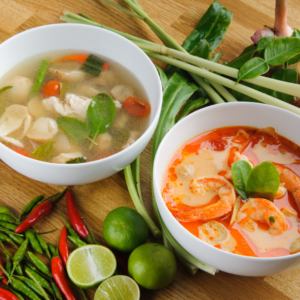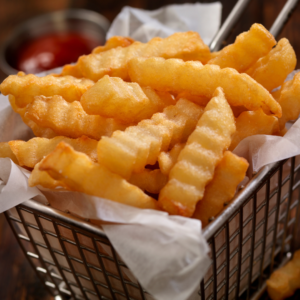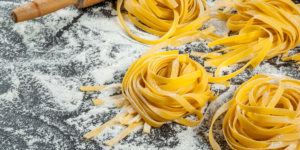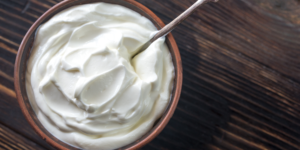There’s a saying that goes, “You eat with your eyes first,” and I totally agree. Food presentation is important in dining but of particular importance in fine dining. Everyone wants to capture Instagram-worthy images of their dining experiences, making food presentation an integral aspect of the culinary world. Visual appeal is crucial, as it can elevate the enjoyment of a dish and influence your perception of flavor and aroma. It also showcases the chef’s creativity and artistic side.
Some people go to restaurants to eat everyday meals like rice. This is not necessarily because it tastes better in the restaurant than at home. More often than not, the presentation style is what’s exciting. So, you see people who have eaten rice all their lives get excited to see the waiter with a plate of rice, readying their cameras to take a few pictures as if it were a new discovery. What’s even more intriguing is that people who have eaten rice all their lives will like the picture almost as soon as it is posted. What does this tell you? Presentation matters…a lot.

That being said, the art of food presentation is not just about making food look good; it’s also about creating excitement and building anticipation for the meal. Whether you’re a chef, food blogger, or simply a food enthusiast, understanding the art of food presentation can help you elevate your culinary creations and make them truly unforgettable.
There are a few noteworthy areas in food presentation. Plate design, plating, decoration, and table setting all matter when it comes to presenting your meal.
Food plating, simply put, is the arrangement of food on a plate. It is the most vital aspect of food presentation.
Proper plating strikes a balance between color, texture, and flavor. The method used is not rigid but influenced by the chef’s personal preference, the theme intended to achieve, and the type of cuisine itself.

What does a proper food presentation do for your diner?
With the right colors and an inviting presentation, you stimulate appetite and build anticipation in your diner. It also gives the first impression that the food must be of good quality and exceptional taste. Because our sense of sight influences our sense of taste, the food will taste better than it naturally does.
What does a proper food presentation do for you?
With just one post on social media, you could double your restaurant’s monthly revenue. The taste may keep diners seated, but it is the appearance that draws them in in the first place. Proper food presentation can increase your sales without having to start a marketing campaign. Social media has turned aesthetics and ambiance into an obsession. Capitalizing on this could do your pocket a lot of good.
Plating techniques and tips
Create height
Your focus shouldn’t be filling up the plate. It should rather be on layering. This gives the illusion of a larger portion size and is also useful in space management. Stacking is one of the food arrangement techniques. Others are overlapping, fanning, and scattering.
In a stacking presentation, the focal point is the side, preferably the left side. Sauces and purees can be spread across the center.

Sauce plating
The way you plate the sauce could take a meal’s visual appeal from zero to a hundred. But there is a technique to it. While plating your sauce, consider the symmetry and arrangement of the other foods, the sauce’s consistency, and how well it complements the meal in general. Application techniques include drizzling, dotting, swirling, and smearing.

Serve small, odd-numbered portions
In serving, the rule of thirds is applied. About a third of the plate should be left empty, while the food is served on two-thirds of the plate. Applying this rule will prevent you from overcrowding the plate.
Odd numbers are also more aesthetically pleasing in food presentation than even numbers. That is why most restaurants use the “trios” plating technique rather than a duo. One piece may be too small, and seven is definitely too much. Play it safe with three or five pieces of food per plate.

Be neat about your serving
If there’s any rule that’s twice as important, it’s this one. Plating and neatness go hand in hand. It speaks little of your culinary prowess when you serve a meal and splatters of stew or stray grains of rice hang around. A neat placement of the food on the plate is very crucial.

Be artistic but keep it simple
For a chef, fine dining is about two things: culinary and art. When the culinary aspect is done, what’s left is the art. Feel free to get artistic with your presentation. You can even sketch an arrangement plan on a sheet of paper to guide you while you do the placement.
Even so, aim to keep it simple. You don’t want to confuse your diners with a complex presentation of the dish. If you must use garnishing, it is preferable to use edible ones.

Consider colors
Colors create visual appeal. For a captivating presentation, learn to match the color of the dish with that of the dishware. For example, darker foods should be served on brighter dishware. Doing otherwise will give the meal a dull and less inviting appearance. Brightly colored foods can be served on bright dishware, but darker dishware is used for contrast and color appreciation.

Plating must-haves
To achieve excellent outcomes in plating your food, these tools are indispensable.
- Precision spoons: with their deep wells, you can gain control of how much liquid or sauce goes onto your plate at a given moment.
- Squeeze bottle: for swirls, swishes, dots, and patterns, a squeeze bottle is your go-to tool. Like a precision spoon, it gives you control over whatever fluid-like or pasty food you’re working with.
- Decorating brush: this tool helps you with detailing.
- Mold: this gives your food a precise shape, depending on the shape of the mold itself. It is also useful in creating height.
- Ring mold: Height is important in food plating. However, some foods do not stack easily. But placing the food together in a ring mold helps create a nice stack.
- Tweezer: this tool is useful for fine-tuning your plating. You may need to place an ingredient carefully on a stack of food or remove a piece of food that has fallen out of place. This tool helps you with that.
The crux
How food is presented matters as much as how it tastes, especially in this social media age. Knowing specific arrangements and plating techniques could bring the A-game to your culinary prowess. Consider elements like color, texture, balance, and consistency when plating. While at it, make sure it is simple enough for your diners to enjoy.











